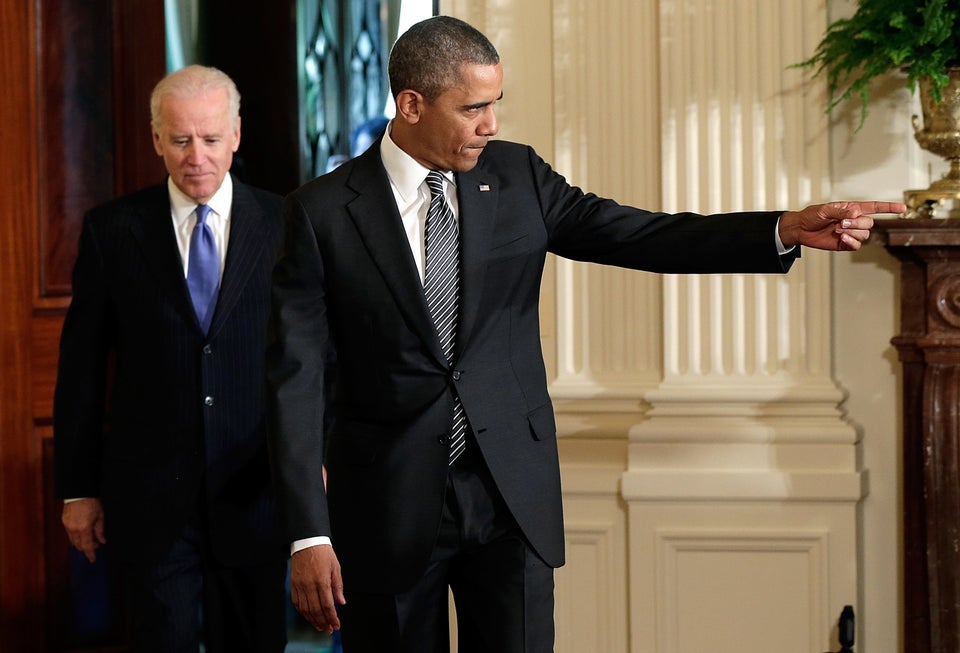SINGAPORE -- If you look at President Barack Obama from the perspective of this wealthy island city-state, you appreciate his demographic breakthrough.
He's not just the first African-American president. He's the first Pacific Islander president of the U.S. In fact, he's the first islander to lead a global power since Britannia ruled the waves or, more recently, Japan tried to do so.
At the beginning of the 21st century, It seems somehow appropriate and useful that most of the U.S. president’s formative years were spent in Jakarta, on the island of Java in Indonesia, and in Honolulu, on the island of Oahu in Hawaii. We are in a new Era of the Oceans now, and the power of the Pacific is rising.
Obama's biography may have given him a certain Pacific Islander style: publicly unhurried and laid-back, a welcoming curiosity about distant cultures and faiths, a belief in the peaceful virtues of trade (in goods and ideas), a fondness for the sea (and beaches) as sources of relaxation and identity. But more importantly, the former teenage body-surfer of the Pacific is comfortable in the territory where the history of this century is being written.
The seas are and will remain a key factor in global trade and food production in the decades ahead while taking a larger role in the development of mineral resources and the widening damage of climate change. All of which is especially true here in the Pacific region.
On his high-profile visit to Asia later this month, Obama will underscore how the ocean ties us together, as he tries to rally countries around the Pacific to moderate, if not counter, the rising role of China in the region.
He will visit three archipelago nations: Japan, the Philippines and Malaysia. His fourth destination, South Korea, is sea-oriented, too, when it isn’t worried about rockets from the North.
I saw evidence of the second Era of the Oceans everywhere on a three-week trip to Singapore, Thailand, Cambodia, Vietnam and Hong Kong.
Ever expanding seaborne trade has spawned steel thickets of cargo cranes in ports from Singapore to Hong Kong. One of the fastest growing complexes is in Ho Chi Minh City, a watery metropolis laced with under-developed Mekong Delta landing spots. The breathtakingly massive container port in Hong Kong used to be the biggest in China. While that distinction now belongs to Shanghai, most of the biggest such ports are in Asia.
China’s dependence on container shipping gives it the right to be concerned about protecting sea lanes to and from these ports. The U.S. can hardly complain. After all, it was our own Rear Adm. Alfred Thayer Mahan who promulgated the “doctrine of sea power” in the name of just such (American) commerce in the late 19th century.
But other countries in the region have the same concerns -- especially but not exclusively in the South China Sea, which the Vietnamese call the Eastern Sea, the Filipinos call the Western Sea, and which is dotted with islands under the disputed control of various countries.
What is true for shipping lanes is also true for fishing grounds. Along the shores of the countries I visited, competition is particularly fierce. It takes navies to sort it out.
As mammoth and cutting-edge as it is, the U.S. Navy can’t play referee across the seas and among the archipelagos of the world. That’s why Defense Secretary Chuck Hagel traveled to Asia ahead of the president, looking for deals and alliances -- even, warily, with China. Chinese officials allowed him to board their first aircraft carrier, a refurbished Russian model that was sold under the laughable guise that it would become a floating casino.
China is becoming more ambitious about container shipping. It has partnered with ideologically congenial Nicaragua to plan one of the largest public works projects ever: a new canal, wider than the one in Panama, across the Central American nation. The Chinese want to ship goods using new super-sized ships that won’t fit through the Panama Canal, which they regard as uncomfortably under U.S. control.
In the Philippines, where export trade is booming, business interests likewise want to dig a canal, to cut shipping times to China and elsewhere.
The seas are also a growing factor in the hunt for minerals and carbon-based resources. No one fully knows what might lie beneath the vast territorial waters of the island nations of the South Pacific. The potential for growth, however, in countries such as Indonesia, Malaysia and the Philippines is considered to be vast.
With all this human activity in and near the ocean, the environmental risks rise exponentially. Climate change is thought by most scientists to be producing more violent coastal storms. In Vietnam, the seaside citizens of Da Nang responded by building a colossal sea god statue facing the harbor. Locals say there hasn’t been a typhoon since. It's also a swell tourist attraction. But Pacific Rim nations may need to work on more politically complex responses to climate change.
Another growing threat: pollution from exploitation of the ocean. Filipino analysts writing in the Manila Bulletin portray Singapore as a beau ideal: a small nation that manages to protect the environment and yet sustain a significant tech-manufacturing sector alongside its famous financial industry.
Meanwhile in Hong Kong, a species of pink dolphin is already at risk. Their prime habitat lies next to Hong Kong’s airport, which business types insist needs to reclaim more land from the sea to build a third runway. Environmentalists are speaking up for the dolphins, and the debate pops up in the letters section of the South China Morning Post.
But if you know Hong Kong, you know that commerce is likely to win. And Barack Obama, man of the Pacific islands though he may be, probably isn’t going to object.

